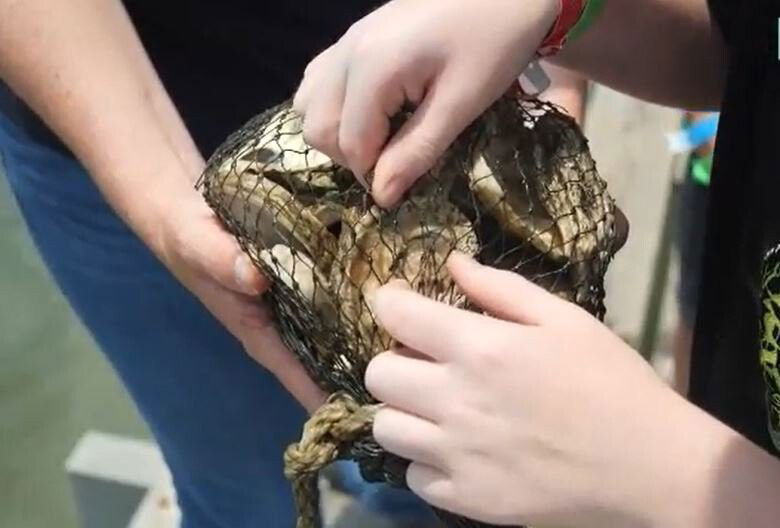Galveston Co. neighbors restoring reefs through oyster gardening

The Galveston Bay Foundation's Volunteer Oyster Gardening program relies on bayfront homeowners to create and maintain oyster gardens using recycled shells.
By Rudy Villarreal
Click here for updates on this story
GALVESTON, Texas (KTRK) — Oyster reefs are one of the worlds most threatened marine habitats. In Galveston Bay alone, more than 50 percent of the oyster reefs have been damaged or destroyed in recent years, in part because of major hurricanes like Ike and Harvey.
But neighbors living by the bay are hoping to change things. The Galveston Bay Foundation’s Volunteer Oyster Gardening program relies on bayfront homeowners to create and maintain oyster gardens using recycled shells.
“The Galveston Bay Foundation works with seafood restaurants spanning from Galveston into Clear Lake and all the way into the inner loop of Houston collect their shells on a weekly basis,” said Haille Leija, Habitat Restoration Manager with the Galveston Bay Foundation.
Last year alone, the foundation set an all-time record for oyster shell collection, recycling 181 tons of shells from local restaurants.
“The reason we want these shells, they’re actually great habitat or substrate, some might say, for baby oysters,” said Leija.
Edwina Peyton has been oyster gardening outside her bayfront home in San Leon, Texas, for more than a decade.
“It’s really low tech,” said Peyton. “You’re putting clean shells in a bag in the water. You just want to keep it clean so that oyster spat will stick to that shell. You rinse them once a week and at the end of the summer you’ve probably grown a lot of baby oysters.”
Oysters also play a big role in keeping the bay clean. One single oyster can filter 50 gallons of water each day, removing pollutants and chemicals.
“It’s such a great program because it allows these folks to see a mini eco-system right there on their pier,” said Leija. “These oyster gardens become home not only to the oysters, but also fish, shrimp, crabs, all sorts of species that those folks and their children and grandchildren get to see.”
“It’s easy, it’s fulfilling, and it teaches all the kids about what’s in the bay,” said Peyton.
Please note: This content carries a strict local market embargo. If you share the same market as the contributor of this article, you may not use it on any platform.